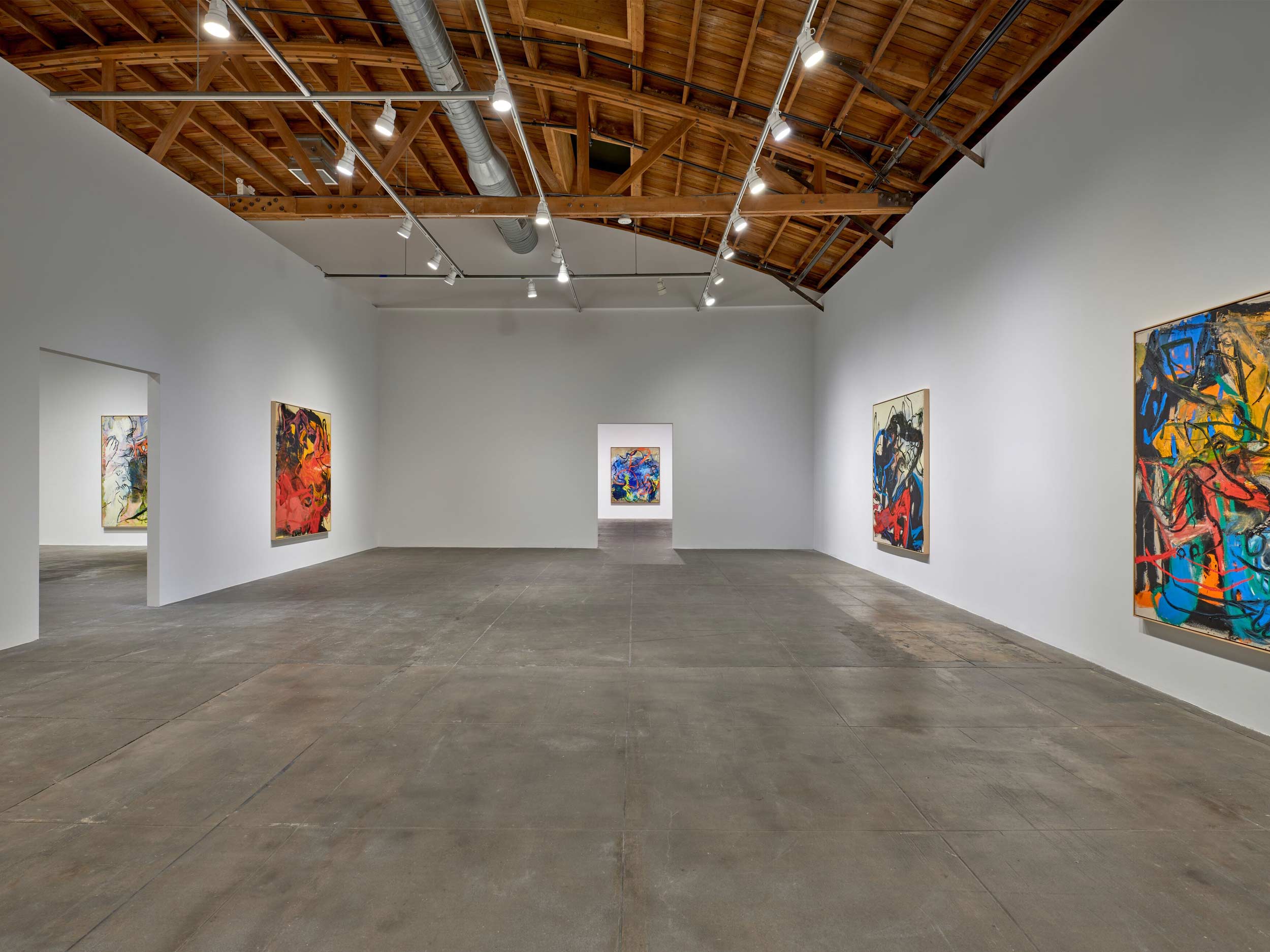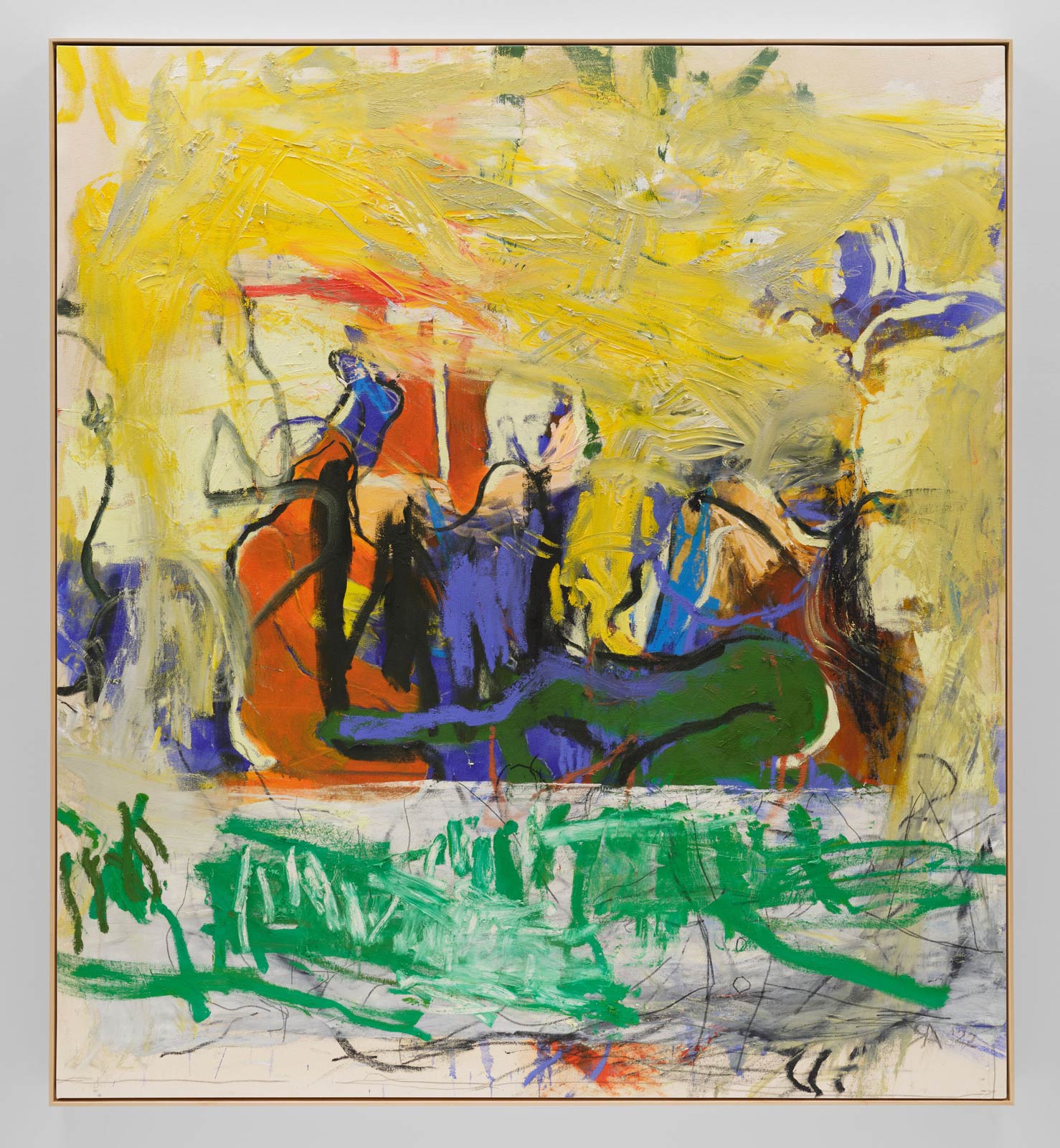The Hungary-born artist’s latest exhibition oscillates between abstraction and representation, with pre-drawn, half-erased scenes that peer through wild brushstrokes
Rita Ackermann paints loudly. Her work demands attention, with application that is childlike and delicate at once. Pre-drawn scenes peer through thickly-applied oil paints, smeared acrylics, and vibrant lines made from China markers. Vertical Vanish, presented by Hauser & Wirth, is the Hungary-born artist’s first West Coast exhibition with the gallery. This series remains true to her distinct visual language: bold, improvisational brushstrokes are scraped away, uncovering pieces of the carefully choreographed figures that lie beneath.
Erasure is critical: a foundation for the oscillation between abstraction and representation that lies at the center of her work. Its ambiguity is built into the seas and streaks of color that populate her canvases and linens. Ackermann ideates mostly in black-and-white, and the vivid pigments she employs emerge instinctually—their gestural nature instilling a sense of animation.
The show’s titular painting—which, the artist explains, was chosen somewhat arbitrarily—depicts fragments of three figures emerging from a vertical spiral. It consumes them in a whirlwind of oranges, blacks, blues, and pinks until they are almost entirely illegible.
Ackermann doesn’t waste time—that is better spent on rumination—with words. She speaks in the opposite manner with which she paints: the former concise and direct, and the latter, urgent and ambiguous. Ackermann joins Document ahead of her exhibition, for a brief reflection on the making of Vertical Vanish.
Megan Hullander: Why did you select Vertical Vanish as the titular piece for this exhibition?
Rita Ackermann: It was the last painting of 2021, and the first one I thought of for the LA exhibition.
Megan: How does the location of the exhibition factor into the work?
Rita: It really doesn’t matter where the exhibition is located.
Megan: What drew you to such saturated colors? How do you see that urgency of color working in conversation with the erased figures?
Rita: Are they saturated colors? To me, they are the colors at hand. My choices are rarely premeditated, and are rarely based on an idea of a color. Maybe that is what I should do next—decide the colors first. This past year, I had been thinking of painting only with black-and-white, adding maybe one color to the concept. But I ended up painting with a lot of colors.
Megan: What is the role of narrative in these works?
Rita: There is no narrative.
Megan: How do you maintain the figures that appear, while keeping the paintings enigmatic?
Rita: If a painting doesn’t have a narrative, it can be read [in] many ways, depending on the eyes of the one who is looking at it.
Megan: Where and how do you find a balance between representation and abstraction?
Rita: I don’t find it. It is the balance that finds me.
Megan: You’re often reserved in interviews. Do you see an element of ambiguity in your work that you’d like to maintain?
Rita: Yes.
Vertical Vanish opens February 2, and will remain on view in the North Gallery of Hauser & Wirth’s Downtown Los Angeles Arts District complex through April 30.















